No Result
View All Result
Background
It was last light on 15 June 2020. The PLA soldiers in Galwan signalled to our soldiers that they had vacated the intruded area at Galwan. In the waning daylight, the Indian soldiers had seen the PLA soldiers removing the galvanised iron sheets, fixed on top of their posts, The signal came when it was almost dark. A bilateral agreement with China in 1996 stated that no weapons, of any kind, would be carried by either side on the Line of Actual Control (LAC). 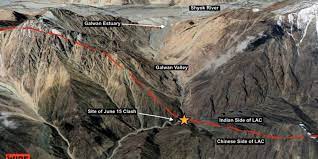 Regular patrolling often resulted in physical hand to hand clashes. It was the restraint shown by Indian troops that ensured that despite any and every provocation, ‘peace’ was maintained. When the soldiers of the PLA signalled, they were sure that the Indian soldiers would physically confirm that they had indeed withdrawn. They had been ordered by Gen. Zhao Zongqi, head of the Western Theatre Command, to create a situation where the “Indian Army” would flee from the conflict Area and give the Chinese a physical and moral victory.
Regular patrolling often resulted in physical hand to hand clashes. It was the restraint shown by Indian troops that ensured that despite any and every provocation, ‘peace’ was maintained. When the soldiers of the PLA signalled, they were sure that the Indian soldiers would physically confirm that they had indeed withdrawn. They had been ordered by Gen. Zhao Zongqi, head of the Western Theatre Command, to create a situation where the “Indian Army” would flee from the conflict Area and give the Chinese a physical and moral victory.

Preparation for this show down had begun well in advance. In hindsight, it is obvious that the Chinese preparations were coordinated with their Bio warfare plans, when they introduced the Wuhan Virus into the World, targetting India and the West. China had begun its military build up (logistics, administrative and operational) in Aug 2019. In addition to construction of roads, defences and building of infrastructure for stay of troops in winters, the Chinese had moved forward a Mechanised Division from Kashgar to Rutog, moved its armour forward towards Depsang Plains, and moved troops forward in Galwan, North and South Pangong Tso and Spangur. They began their incursion into areas, normally controlled by India, in end May 2020. When India objected, they agreed to withdraw to the previously held lines. But they had orders from Zongqi which stated otherwise. A few weeks prior, the Chinese Defence Minister Wei Fenghe made a statement encouraging the PLA to ‘use fighting to promote stability’. The Chinese tabloid, Global Times, only two weeks before the Clash, warned that India would suffer a ‘devastating blow’ to its trade and economic ties with China if it got ‘involved in the US-China rivalry’. On seeing this massive build up by the Chinese, India also quickly built up its own strength moving up infantry, armour and air assets to forward locations. The speed of the Indian build-up surprised the Chinese but they decided to go ahead with their misadventure anyway.
Nov 1962, 13 Kumaon had lost 118 soldiers at Rezang La. Two troops of 20 Lancers with their AMX 13 tanks had been transported by air to Chushul. The Chinese had captured Gurung Hill, overlooking the Spangur gap after a tough fight with a company of 1/8 GR supported by 20 Lancers. India lost 22 soldiers. This stupendous defence discouraged the Chinese from continuing with their attack in this region. Over 1500 Chinese soldiers had perished in the Chusul Area. It was a different story from what had happened at NEFA in 1962.
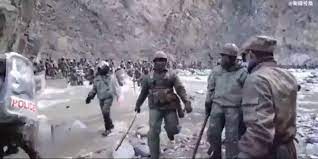
Now, in 2020, the Chinese hierarchy apparently wanted to escalate the situation so that they could force a final settlement of the Aksai Chin Issue. Their strategy was to replicate the same in Sikkim, Bhutan and Arunachal Pradesh. They believed that they would teach the Indian Army a lesson once and for all. They were confident that this would have a long term impact and leave a deep scar, like they had achieved in 1962. Galwan had now been selected as the flash point. The Indian soldiers reacted as anticipated by the Chinese. With no weapons, Col Santosh Babu, the Commanding officer (CO) of the BIHAR Battalion and a mix of soldiers from his own BIHAR Battalion, a few PUNJAB Regiment braves, soldiers from the artillery Regiment, Engineer Regiment, Division Signal Regiment and other assorted troops were at the Galwan River. Col Babu with nine soldiers from various Units went across the river to confirm the Chinese claim that they had actually withdrawn. As they climbed the slope towards the location of the bunkers that had been supposedly vacated, the treacherous Chinese soldiers shrieked out aloud and rushed forward 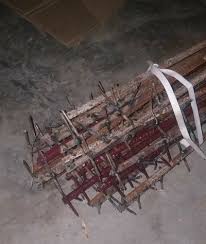 with a variety of pre historic weapons made out of rusty nails fixed on wooden baseball bats, rocks tied on poles and wooden planks fixed with iron nails, many of these prehistoric weapons wound with Barbed Wire.
with a variety of pre historic weapons made out of rusty nails fixed on wooden baseball bats, rocks tied on poles and wooden planks fixed with iron nails, many of these prehistoric weapons wound with Barbed Wire.  The bulk of the company saw this and rushed forward to protect Col Babu. An unarmed Col Babu and his nine brave soldiers were already engaged in hand to hand combat on the narrow treacherous track leading to the Chinese post. They managed to prise out some of the crude handmade weapons being used by the chinese cowards and began the counter ambush drills taught so well in Indian Military Training Institutions.
The bulk of the company saw this and rushed forward to protect Col Babu. An unarmed Col Babu and his nine brave soldiers were already engaged in hand to hand combat on the narrow treacherous track leading to the Chinese post. They managed to prise out some of the crude handmade weapons being used by the chinese cowards and began the counter ambush drills taught so well in Indian Military Training Institutions. 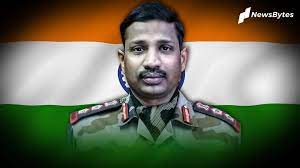 fell, but by then he had accounted for five of the Chinese attackers. While falling into the River below he took along-with him five more Chinese soldiers. Sep Gurbinder killed 12 Chinese soldiers before falling to his death. Naib Subedar N Soren, Havildar Palani and Sep Gurtej Singh also took down many Chinese soldiers with them. Col Babu’s troops saw red. How dare the cowards touch their Commanding Officer? It made little difference to the boys from the Punjab Regiment or Artillery that Col Babu was not their CO. A CO had been attacked and it was their duty to fight back. The Chinese soldiers had not expected such a fierce reaction. The Indian soldiers, with dogged determination, chased these attackers to their death. The narrow mountainous track was not wide enough for a free flight. In the words of the participants in the incident, the chasing Indian soldiers killed, a hundred or more Chinese.
fell, but by then he had accounted for five of the Chinese attackers. While falling into the River below he took along-with him five more Chinese soldiers. Sep Gurbinder killed 12 Chinese soldiers before falling to his death. Naib Subedar N Soren, Havildar Palani and Sep Gurtej Singh also took down many Chinese soldiers with them. Col Babu’s troops saw red. How dare the cowards touch their Commanding Officer? It made little difference to the boys from the Punjab Regiment or Artillery that Col Babu was not their CO. A CO had been attacked and it was their duty to fight back. The Chinese soldiers had not expected such a fierce reaction. The Indian soldiers, with dogged determination, chased these attackers to their death. The narrow mountainous track was not wide enough for a free flight. In the words of the participants in the incident, the chasing Indian soldiers killed, a hundred or more Chinese. 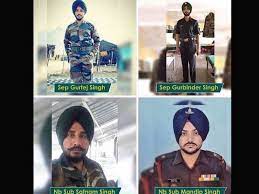 The Chinese soldiers fled two kms into their territory chased by the violently angry Indian Soldiers. The official figure given by the Indian Army was 20 of their own killed with 45 PLA soldiers killed. At least 75 Indian soldiers were wounded. The Chinese claimed that only four of their troops were killed. The Indian troops at Galwan knew that the Chinese had lost more than 150. After all, every dead Indian Soldier had, on an average, taken at least six PLA Soldiers down with him into the river. Anyone who fell into the freezing Galwan River had little hope of surviving more than a few minutes. The other Indian soldiers chasing the fleeing Chinese soldiers had accounted for another 100 at least. The Chinese continued with their subterfuge, claiming, even today, that only four lives were lost! Remember the Pakistani claim in Kargil that no Pakistani soldier had been killed in their Kargil misadventure! Irrespective of their claims, the Chinese troops had lost the will to fight. Videos of crying soldiers were put out by their own soldiers. Meanwhile the Indian Army acted quickly to occupy strategic heights. The Chinese did not react. And they asked for a retreat which the gentlemanly Indian Army accepted. The Chinese, in an effort to delay condemnation within their own Country, have not withdrawn except for one spot around the Pangong Tso. But the equations had changed. A Tipping Point had been reached. Never again would the PLA underestimate the Indian Army. And they would never again use prehistoric weapons even if ordered to by their Commander of their Western Theatre Command. Or even by their President.
The Chinese soldiers fled two kms into their territory chased by the violently angry Indian Soldiers. The official figure given by the Indian Army was 20 of their own killed with 45 PLA soldiers killed. At least 75 Indian soldiers were wounded. The Chinese claimed that only four of their troops were killed. The Indian troops at Galwan knew that the Chinese had lost more than 150. After all, every dead Indian Soldier had, on an average, taken at least six PLA Soldiers down with him into the river. Anyone who fell into the freezing Galwan River had little hope of surviving more than a few minutes. The other Indian soldiers chasing the fleeing Chinese soldiers had accounted for another 100 at least. The Chinese continued with their subterfuge, claiming, even today, that only four lives were lost! Remember the Pakistani claim in Kargil that no Pakistani soldier had been killed in their Kargil misadventure! Irrespective of their claims, the Chinese troops had lost the will to fight. Videos of crying soldiers were put out by their own soldiers. Meanwhile the Indian Army acted quickly to occupy strategic heights. The Chinese did not react. And they asked for a retreat which the gentlemanly Indian Army accepted. The Chinese, in an effort to delay condemnation within their own Country, have not withdrawn except for one spot around the Pangong Tso. But the equations had changed. A Tipping Point had been reached. Never again would the PLA underestimate the Indian Army. And they would never again use prehistoric weapons even if ordered to by their Commander of their Western Theatre Command. Or even by their President.
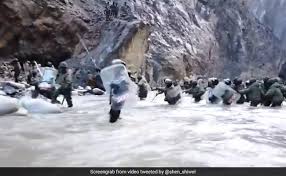
The Chinese had twice burnt their fingers in 1967 at Natu La and Cho La. The ambush of 5 Assam Rifles at Tulung La on 20 Oct 1975, ten kms within Indian Territory killed four Indian soldiers. Of Course, the Chinese had swiftly fled back to their own side after doing the damage. India tried to wish away the attack by filing a ‘strong protest’. The Chinese had established a moral ascendancy and our troops were strictly instructed by their superiors to avoid provoking the Chinese! This defensive outlook changed in 1986 in the aftermath of the PLA occupation of Wangdung in Arunachal Pradesh when aggressive defence ordered by Gen Sunderji, the then Army Chief, by occupation of the Hathungla Ridge and all strategic locations, surprised the Chinese. The Yangtse incident in Arunachal Pradesh of 1999, around the same time as Kargil, in which the PLA had tried to evict the Yangtse post occupied on the Mcmohan Line, was doggedly resisted. The PLA was pushed back by the spirited soldiers of the Mahar Regiment. The Corps Commander had ordered moving up of the Bofors Regiment which made the PLA request for peace and tranquility on the International Border. However, the effort to avoid provoking the Chinese continued till the Galwan defence by Col Santosh Babu and his brave men.
China
In the eighties it was known that the Chinese PLA Forces had 11 Border Defence Regiments in a border guarding role all along the LAC and the International Border from Daulat Beg Oldi (DBO) in Ladakh to Dichu in Arunachal Pradesh. They had about seven Infantry Divisions within Tibet which could be moved for offensive operations at a place of their choosing. They could also move forward another six Infantry Divisions forward from the Mainland to support any operations against India, that is, a total of 23 Divisions. In 1992 he began his fourth Great Improvement, that of the Armed Forces. When, in 1994, in the second lot of raisings, he raised his four Rapid Reaction Force Divisions at Lanzhou and Chengdu for operations in Tibet, he only increased his capability marginally. The construction of the Golmud Lhasa Railway, now extended to Shigatse, the Golmud Lhasa oil Pipeline and the G 109 Highway from Beijing to Lhasa did marginally increase his capability to have about 30 to 32 Divisions in Tibet. However, by now the increase in Indian infrastructure necessitated an increase in the Border Defence Capability of the Chinese PLA with about three more divisions.  With 14 Divisions in a border defence role, the PLA can build up a maximum of 16 to 18 Infantry Divisions for offensive operations. However, the three new Army Special Forces Regiments, versatile in the use of powered parachutes and para gliding equipment, the newly improved Army Aviation Units with a marked increase in the No of helicopters held and the use of drone swarms can create disruptions in the rear areas assisting his ground offensive tremendously. Interestingly the 15 Airborne Corps with three airborne divisions (15000 men each) have been exercising in Tibet in recent years.
With 14 Divisions in a border defence role, the PLA can build up a maximum of 16 to 18 Infantry Divisions for offensive operations. However, the three new Army Special Forces Regiments, versatile in the use of powered parachutes and para gliding equipment, the newly improved Army Aviation Units with a marked increase in the No of helicopters held and the use of drone swarms can create disruptions in the rear areas assisting his ground offensive tremendously. Interestingly the 15 Airborne Corps with three airborne divisions (15000 men each) have been exercising in Tibet in recent years.
Conventional Offensive operations in mountains dictate a ratio of 9:1 for success. Considering that every offensive operation against an Indian infantry company would need one Chinese infantry regiment (equivalent to our infantry Bbrigade, ie, nine infantry companies), the Chinese would need at least one infantry division (nine Battalions) on one Axis before they crossed our delaying positions. Another three infantry Divisions (27 Battalions) would be needed to clear the Battalion Covering Position Locations. Before they reached the Forward Defended Localities of the main defences the PLA would have lost three to four Divisions. Despite all the improvement in Infrastructure in Tibet, it would take the PLA at least one week to overcome the forward delaying Positions on one Axis. Imagine such losses on the three Axes he has to advance upon to gain any advantage. The Chinese are aware that they do not have the wherewithal to mount a major offensive on any of our Main Defences in Ladakh, Sikkim or Arunachal Pradesh. Conversely, the increased infrastructure improvement on the Indian side meant that any meaningful success was possible only on one or two axis with India retaining the ability to turn their flanks or launch their own Counter Offensive in more than a few places. The PLA will need to think out of the box, plan for Limited Offensives, use various Force Multipliers to achieve successes in limited Points of Decision. They may resort to limited tactical use of his DF 21 missiles or other tactical nuclear missiles to suppress defiance by the Indian Army for a quick success in any of the chosen sectors. How far will they go is the question? For each of his force multipliers, India will have a reply.
This scenario is unlikely to change, even if the extensive rail, road and electronic communication upgradation, planned to be ready by 2030 is completed. For this China will need to ramp up support of subversive elements in India. Unless internal unrest can be created, India cannot be taken on by the PLA as they did in 1962. The planned unrests in India will need to be created near areas where he has created new infrastructure opposite the Indian International Border. Therefore, China will plan on an integrated collaborative warfare, aimed at unsettling India economically, physically and Psychologically. This is why India needs to be concerned about the following aspects of Infrastructure in Tibet: –
(a) Railway lines being constructed towards Burang (opposite Pithoragarh) near the Mansarovar Lake, Kathmandu and Yatung from Shigatse.
(b) The Linzhi Ya’an Railway Line, which will connect Chengdu with Lhasa and will be later extended from Shigatse to Ngari and Hotan/Kasghar will provide a high speed link for moving reinforcements and replenishments.
(c) The extensive expressways, G6, G4217 and G4218 to Lhasa, and the G4218 from Lhasa to Yecheng (called the YaYe expressway) will also provide high speed access for shifting Chinese troops from West to the East or vice versa.
(d) The four National Highways, G317, G318, G219 and G366 (the new highway planned from Saga to Guangdong) expected to run West to East within a 40 km width along our IB should be of deep concern as they augment the capacity of the expressways. The question on the requirement of four National Highways running West to East so close to the International Border needs to be answered.
(e) The G216 National Highway under construction North to South from Almaty bypassing Hotan to Kyirong/Yatung and the new G562 from Nagqu running North to South parallel to the G 216 to Yatung need to be closely monitored.
(f) The many new airports and airfields, most of them in High Altitude Areas, and upgradation of many of these also need to be watched. Of particular concern are the Hotan, Kasghar, and Aksu Airports all at heights of only 1100 to 1400 meters and only 386 to 616 kms from Leh.
(g) Lhasa Airport at an elevation of 3570m has two runways each 4000m long. Many possible missile sites and underground storage accommodation in and around Lhasa need constant monitoring.
The Chinese know that their superiority in 5G networks and an edge in drone technology alone will not win them a war. They are also having problems with the engines for their JF17 aircraft. Their claim of invincibility is for propaganda purposes through paid reportage only. Many so called experts, especially in India, have fallen for their ploy. As it was proved both in the Falklands and in the Gulf Wars, boots on the ground are essential to achieve any tangible results.
Chinese improvement of Infrastructure in Tibet has been extensive and are definitely a cause for concern even if they do not make the PLA invincible in carrying out offensive operations against India. We also need to be wary of some additional factors that could assist the PLA in their offensive against us: –
-
Chinese C4I infrastructure, particularly its massive investment on Fibre Optics and 5G networks along the border/LAC.
-
Data Mining particularly of Indian Defence and Security Systems.
-
Hacking of Indian Command, Control, Communication and Intelligence Infrastructure, particularly of Air Defence, Artillery and Missile Networks.
-
-
Coordination with and support from Pakistan.
Pakistan
Any military cooperation with China will need Pakistan to move his 11 and/or 12 Corps into the Area held by Force Commander Northern Areas (FCNA), a division size formation holding the heights from Muzaffarabad to Kargil. The Army Reserve North (ARN) or 11 Corps will need to be moved up from Peshawar to Skardu/ Gilgit. Army Reserve South (ARS) or 12 Corps is already involved heavily in Baluchistan. With the intransigence shown by the Tehrik e Taliban, and the bubbling Baluchistan Problem, the possibility of Pakistan sparing 11 Corps for combined operations with China, in the near future, appears to be remote. The need to keep the CPEC Routes protected will also prevent the move of 11 or 12 Corps out of the area. However, the strengthening of the Pakistani Forces by troops from elsewhere in China, or even from Turkey, is a strong possibility. Turkey has offered its military support to Pakistan and Turkish commanders have carried out reconnaissance in Pakistan Occupied Kashmir. China can ill afford to lose its grip on its investments made on the dams on the Indus, nor can it ignore the developments made on the CPEC in Pakistan. Commanders from the PLA have also been seen in the Areas opposite Kupwara and Kargil, and it is imperative that a close watch be maintained on this Chinese activity. Once the US withdrawal from Afghanistan is completed, employment of irregulars for augmenting their offensive capability is possible.
Possible Scenario
China desires to reverse the ignominy suffered by them on 15/16 Jun 2020. It is learnt that they have carried out a complete turnover of their troops in Western Tibet. Conduct of extensive exercises to encourage their troops to fight does not seem to have had the right result. Large scale desertions and a palpable reluctance amongst the soldiers to fight is bugging the PLA. Despite the desire of the Chinese Government to hit back at India, the possibility of the PLA seeking conflict with India appears remote. However, the territorial aspirations of the Chinese political leadership cannot be ignored. The Galwan Clash which gave the PLA a bloody nose has also severely eroded Chinese economic interests in the region. At the same time, it has severely dented its ego and its false sense of invincibility. In a worst case scenario, the Chinese could carry out a limited offensive in the gen area of Ladakh, in an effort to capture Daulat Beg Oldi in order to threaten Siachen from the East. Use of DF 11 (Range 300 kms), DF 15 (600 kms), both Short Range Ballistic Missiles, or even DH21 (1750 kms) Intermediate Range Ballistic Missiles with nuclear warheads is unlikely as he can be sure of an instant response from India. To prevent any transfer of Forces from the East, and degrade our war waging capability, he could carry out a limited offensive along any one of the Axes in Arunachal Pradesh or Sikkim. At the same time Pakistan with Turkish assistance could attempt a coordinated limited offensive in Kargil after activating parts of the LC and portions of the IB. Capture of major objectives are unlikely to be planned for. However, any offensive by Pakistan will severely destabilise their own defences. Except for the threat of a nuclear/chemical/biological assault, no major successes can be contemplated by any of these belligerent nations. India is capable of defending its territory. China may achieve limited success, without severely affecting our defensive capability. Pakistan, with its allies, will suffer another ignominy. Loss of areas, presently occupied by them, is a very strong possibility.
On this First Anniversary of sacrifice of Colonel Santosh Babu and his brave men, it bears reiteration that the Chinese have lost far more that they had ever believed they would gain. They not only lost militarily, but their soldiers have been psychologically beaten, irrespective of what the official Chinese stand may be. The economic and commercial destruction of the Chinese have been tremendous. Chinese hopes of any military superiority over India has been crushed. The fact that the Chinese were conducting a biological warfare followed up with a military offensive has been understood the world over. That it has failed has also been exposed. 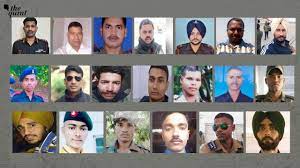
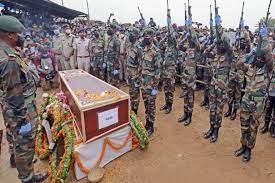
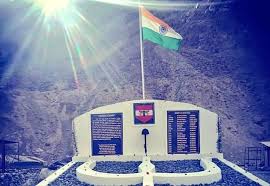
Our salutes to Colonel Santosh Babu and his 19 colleagues who taught the Chinese a lesson that they will never forget. The tremendous boost that this aggressive defence has given to the Indian Army needs no reiteration. Do accept our salutes and sincere gratitude, you bravehearts of Galwan. Your achievement in putting the fear into the Chinese Soldier is unprecedented. Your sacrifice will never go in vain. Your Country will always rever you.
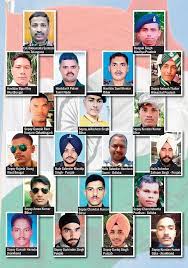


No Result
View All Result
 Regular patrolling often resulted in physical hand to hand clashes. It was the restraint shown by Indian troops that ensured that despite any and every provocation, ‘peace’ was maintained. When the soldiers of the PLA signalled, they were sure that the Indian soldiers would physically confirm that they had indeed withdrawn. They had been ordered by Gen. Zhao Zongqi, head of the Western Theatre Command, to create a situation where the “Indian Army” would flee from the conflict Area and give the Chinese a physical and moral victory.
Regular patrolling often resulted in physical hand to hand clashes. It was the restraint shown by Indian troops that ensured that despite any and every provocation, ‘peace’ was maintained. When the soldiers of the PLA signalled, they were sure that the Indian soldiers would physically confirm that they had indeed withdrawn. They had been ordered by Gen. Zhao Zongqi, head of the Western Theatre Command, to create a situation where the “Indian Army” would flee from the conflict Area and give the Chinese a physical and moral victory. with a variety of pre historic weapons made out of rusty nails fixed on wooden baseball bats, rocks tied on poles and wooden planks fixed with iron nails, many of these prehistoric weapons wound with Barbed Wire.
with a variety of pre historic weapons made out of rusty nails fixed on wooden baseball bats, rocks tied on poles and wooden planks fixed with iron nails, many of these prehistoric weapons wound with Barbed Wire.  The bulk of the company saw this and rushed forward to protect Col Babu. An unarmed Col Babu and his nine brave soldiers were already engaged in hand to hand combat on the narrow treacherous track leading to the Chinese post. They managed to prise out some of the crude handmade weapons being used by the chinese cowards and began the counter ambush drills taught so well in Indian Military Training Institutions.
The bulk of the company saw this and rushed forward to protect Col Babu. An unarmed Col Babu and his nine brave soldiers were already engaged in hand to hand combat on the narrow treacherous track leading to the Chinese post. They managed to prise out some of the crude handmade weapons being used by the chinese cowards and began the counter ambush drills taught so well in Indian Military Training Institutions.  fell, but by then he had accounted for five of the Chinese attackers. While falling into the River below he took along-with him five more Chinese soldiers. Sep Gurbinder killed 12 Chinese soldiers before falling to his death. Naib Subedar N Soren, Havildar Palani and Sep Gurtej Singh also took down many Chinese soldiers with them. Col Babu’s troops saw red. How dare the cowards touch their Commanding Officer? It made little difference to the boys from the Punjab Regiment or Artillery that Col Babu was not their CO. A CO had been attacked and it was their duty to fight back. The Chinese soldiers had not expected such a fierce reaction. The Indian soldiers, with dogged determination, chased these attackers to their death. The narrow mountainous track was not wide enough for a free flight. In the words of the participants in the incident, the chasing Indian soldiers killed, a hundred or more Chinese.
fell, but by then he had accounted for five of the Chinese attackers. While falling into the River below he took along-with him five more Chinese soldiers. Sep Gurbinder killed 12 Chinese soldiers before falling to his death. Naib Subedar N Soren, Havildar Palani and Sep Gurtej Singh also took down many Chinese soldiers with them. Col Babu’s troops saw red. How dare the cowards touch their Commanding Officer? It made little difference to the boys from the Punjab Regiment or Artillery that Col Babu was not their CO. A CO had been attacked and it was their duty to fight back. The Chinese soldiers had not expected such a fierce reaction. The Indian soldiers, with dogged determination, chased these attackers to their death. The narrow mountainous track was not wide enough for a free flight. In the words of the participants in the incident, the chasing Indian soldiers killed, a hundred or more Chinese.  The Chinese soldiers fled two kms into their territory chased by the violently angry Indian Soldiers. The official figure given by the Indian Army was 20 of their own killed with 45 PLA soldiers killed. At least 75 Indian soldiers were wounded. The Chinese claimed that only four of their troops were killed. The Indian troops at Galwan knew that the Chinese had lost more than 150. After all, every dead Indian Soldier had, on an average, taken at least six PLA Soldiers down with him into the river. Anyone who fell into the freezing Galwan River had little hope of surviving more than a few minutes. The other Indian soldiers chasing the fleeing Chinese soldiers had accounted for another 100 at least. The Chinese continued with their subterfuge, claiming, even today, that only four lives were lost! Remember the Pakistani claim in Kargil that no Pakistani soldier had been killed in their Kargil misadventure! Irrespective of their claims, the Chinese troops had lost the will to fight. Videos of crying soldiers were put out by their own soldiers. Meanwhile the Indian Army acted quickly to occupy strategic heights. The Chinese did not react. And they asked for a retreat which the gentlemanly Indian Army accepted. The Chinese, in an effort to delay condemnation within their own Country, have not withdrawn except for one spot around the Pangong Tso. But the equations had changed. A Tipping Point had been reached. Never again would the PLA underestimate the Indian Army. And they would never again use prehistoric weapons even if ordered to by their Commander of their Western Theatre Command. Or even by their President.
The Chinese soldiers fled two kms into their territory chased by the violently angry Indian Soldiers. The official figure given by the Indian Army was 20 of their own killed with 45 PLA soldiers killed. At least 75 Indian soldiers were wounded. The Chinese claimed that only four of their troops were killed. The Indian troops at Galwan knew that the Chinese had lost more than 150. After all, every dead Indian Soldier had, on an average, taken at least six PLA Soldiers down with him into the river. Anyone who fell into the freezing Galwan River had little hope of surviving more than a few minutes. The other Indian soldiers chasing the fleeing Chinese soldiers had accounted for another 100 at least. The Chinese continued with their subterfuge, claiming, even today, that only four lives were lost! Remember the Pakistani claim in Kargil that no Pakistani soldier had been killed in their Kargil misadventure! Irrespective of their claims, the Chinese troops had lost the will to fight. Videos of crying soldiers were put out by their own soldiers. Meanwhile the Indian Army acted quickly to occupy strategic heights. The Chinese did not react. And they asked for a retreat which the gentlemanly Indian Army accepted. The Chinese, in an effort to delay condemnation within their own Country, have not withdrawn except for one spot around the Pangong Tso. But the equations had changed. A Tipping Point had been reached. Never again would the PLA underestimate the Indian Army. And they would never again use prehistoric weapons even if ordered to by their Commander of their Western Theatre Command. Or even by their President. With 14 Divisions in a border defence role, the PLA can build up a maximum of 16 to 18 Infantry Divisions for offensive operations. However, the three new Army Special Forces Regiments, versatile in the use of powered parachutes and para gliding equipment, the newly improved Army Aviation Units with a marked increase in the No of helicopters held and the use of drone swarms can create disruptions in the rear areas assisting his ground offensive tremendously. Interestingly the 15 Airborne Corps with three airborne divisions (15000 men each) have been exercising in Tibet in recent years.
With 14 Divisions in a border defence role, the PLA can build up a maximum of 16 to 18 Infantry Divisions for offensive operations. However, the three new Army Special Forces Regiments, versatile in the use of powered parachutes and para gliding equipment, the newly improved Army Aviation Units with a marked increase in the No of helicopters held and the use of drone swarms can create disruptions in the rear areas assisting his ground offensive tremendously. Interestingly the 15 Airborne Corps with three airborne divisions (15000 men each) have been exercising in Tibet in recent years.

















Thanks for d post
Most befitting tribute and an accurate and exhaustive account of Galwan action . No better way to remember the bravery and supreme sacrifice of our great heroes.
Amazing analysis. Although some assumptions made for the future may not prove 2b accurate, the breakdown provides deep insight to the past and future. Impressive.
Thanks Maddy for refreshing my memory. Very exhaustive description & analysis
A well analysed article. Congrats
Expect more such articles
Comprehensive insight and well articulated article. Congratulations
A befitting tribute and exhaustive account of Galwan action . No better way to remember the bravery and supreme sacrifice of our great heroes. Very well documented.
Great article. Tribute to the martyrs. Excellent analysis of the geographic and infrastructure challenges in the North East. Most relevant article for scholars of Land Warfare.
Well written article. Absorbing, analytical and thought provoking. Perfect tributes to our Heroes.
A very articulately analyzed real time article without much superflous military jargons in appreciation of our Galwan ghati heroes giving a clear picture to anyone from any background.
Thank you for the post on your blog. Do you provide an RSS feed?